This summer, apartment communities in Bellandur have struggled with water scarcity as their borewells dried up and private tankers cut down supply. In a recent workshop organised by the RWA network Bellandur Development Forum, the communities here decided to take initiative themselves to improve groundwater levels in the area. Several communities have started digging recharge wells in their own premises, at their own cost.
One of these is Mantri Espana. Seven recharge wells are being dug in the premises of this apartment complex. The complex has had a rooftop rainwater harvesting (RWH) system for many years. This, along with their Cauvery water connection, has ensured that the community does not have to rely on borewells or private tankers yet.
Seema Sharma, a resident here, says, “We still have a lot of rainwater going down the drains in monsoon. Some areas even get flooded. With the new 3ft X 25-30 ft recharge wells, we are going to tap into more rainwater, to recharge our groundwater table. Seven borewells are being dug here, at the total cost of Rs 3 lakh.”
The concept behind recharge wells is that water collected in the well would percolate into the ground, and recharge shallow aquifers. Shallow aquifers are water-bearing formations that exist about 10-100 ft underground, which usually get replenished during rains. However, in urban built-up spaces, percolation and recharge levels are low. The idea is that through recharge wells, rainwater can be routed into shallow aquifers, which will enhance groundwater levels.
An example is the case of Rainbow Drive layout which has become water-secure with recharge wells and other measures, and of Vidyaranyapura resident R Balasubramaniyan who does not rely on Cauvery water supply anymore.
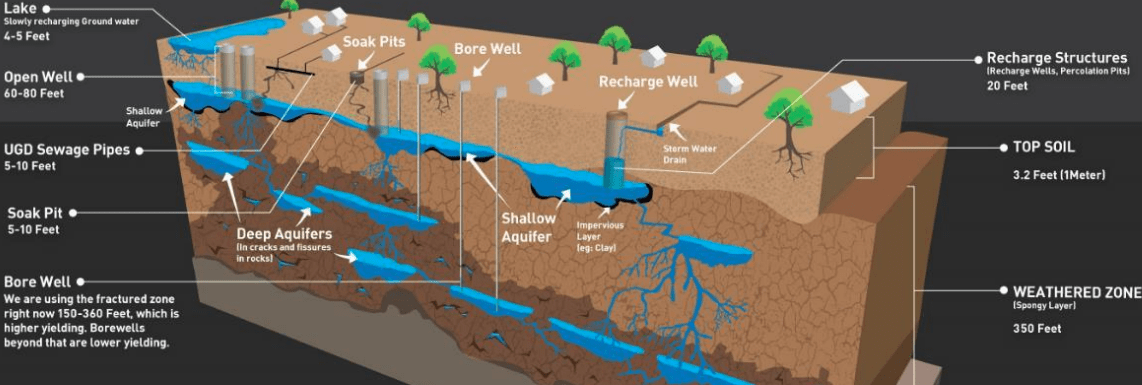
This illustration shows how a recharge well (to the right) can recharge the shallow aquifer underground. Credit: Biome
The decision at the workshop in Bellandur was to build 2500 wells in the area. This is part of the ‘A Million Recharge Wells’ project initiated by Biome Environmental Trust. According to S Vishwanath of Biome, the project to build one million recharge wells in Bengaluru can lead to groundwater yield of about 2400 million litres per day. This is more than the water pumped in from Cauvery currently.
“Though we have no immediate benefit from the recharge wells being dug now, these will give water security in the long term,” says Seema.

A recharge well under construction in Mantri Espana, which hit the water table. Pic: Seema Sharma
Why recharge wells?
- Recharge wells ensure that rainwater percolates into the ground and recharges aquifers
- They mitigate water-logging and flooding
- In the long run, the recharge well itself may retain water, which you can pump and use.
- They consume little real estate
- If you live within BBMP limits or have a BWSSB connection, you are legally required to build a recharge well. If your property has a built-up area exceeding 100m²/1100 ft² on sital area of 200m²/2150 ft² (as BBMP bye laws 2003, bye-law 32) or a built up area of 1200 ft² or more on sital area of 2400 ft² or more (as per BWSSB Amendment Act, 2009), you need a recharge well of minimum of 3 ft diameter and 18 ft depth.
What are the components of a recharge well?
- Catchment: Any paved or unpaved surface – such as your rooftop, plot (garden, driveway etc) – can be the catchment that collects rainwater. The catchment does not have to be super-clean, since the earth itself will filter the water percolating out of the well. However, avoid catchments with chemical contamination.
- Conveyance: If your catchment is the rooftop, then downpipes or gutters can carry rainwater from here to the recharge well. In layouts and apartment complexes, rainwater runoff from multiple catchment areas (parks, roads, gardens, rooftop etc) can be routed into the recharge well.
- Filtration: Filtration is required only to remove large debris and silt. Hence the design of the filter depends on the catchment and the kind of debris prevalent there. For example, if the catchment includes a garden, leaf debris may need to be controlled, but it if is a paved area, solid waste like plastic packets need to be removed. Normally, an in-drain filter to capture large debris, along with a silt trap, is effective. Filtration is not needed when water is routed from a clean rooftop or tank/sump.
- Recharge well: These are far easier to construct than traditional open wells. Their size vary, but a typical recharge well of 3 ft diameter and 20 ft depth can hold 4000 litres of water. This water will take about two days to percolate down in sandy soil. The type and number of recharge wells are determined based on the catchment area, the rate of rainwater runoff and infiltration into the soil. You can consult an RWH expert on where to locate your recharge wells. You will have to engage a plumber and well-digger to construct the wells.
How many recharge wells and where?
- For houses, a 3ft x 20ft well would suffice for a 30X40 plot, and a 4ft x 30ft well for a 60X40 plot. The overflow from the sump, stormwater drain or downpipes, are connected to the well.
- For a layout, plan one 5 ft x 30 ft well, or 2-3 wells of 3 ft x 20 ft each, per acre. Here, the runoff from common areas is channelled into the well.

A recharge well in a layout. Pic: Biome
How is the recharge well built?
- First the soil is excavated to the desired depth. You may encounter rock or water inflow/seepage along the way. In case of seepage, digging can be continued after the water is pumped out or manually removed. Since seepage can cause the collapse of side walls, work should be continued after ensuring workers’ safety.
- Dumping of excavated soil is difficult and expensive, especially in core areas of the city as there is no demand for it. This soil is unsuitable for farming as well. You should identify a nearby location for dumping soil, but it may still cost you.
- Well digging is stopped upon touching the water table. Once digging is stopped, concrete rings are lowered one-by-one into the well. The space between the rings is not plastered, and the bottom of the well is left unlined, to allow well water to seep out from all sides.

Upon touching the water table, digging is stopped and concrete rings are lowered into the well. Pic: Biome
-
- Aggregate or jelly stones are used to line the gap between the ring and the wall of the well, to reinforce the well structure and ensure that it does not collapse.

The well is lined with jelly stones. Pic: Biome
-
- The well would normally be 6-8 inches wider than the external diameter of the concrete rings.
- Once the structure is completed, you can connect overflow from your sump, stormwater drain or downpipes from your roof, to the recharge well. The well is also fitted with an electric motor. The mouth of the well should be covered with a good quality grilled or perforated RCC slab, to prevent accidents. A 2 ft x 2 ft manhole can be fixed on the RCC slab to give access to the well for maintenance. There should also be a peephole that would allow you to monitor water levels. You can also have a safety grill placed 2-3 feet below the RCC slab, to ensure safety in case the slab gives way.

Cover the recharge well with a RCC slab or safety grill. Also fit the well with a motor. Pic: Biome
-
Recharge wells can be constructed within stormwater drains too. In this case, the components are similar, and hardly any real estate is wasted for the structure.
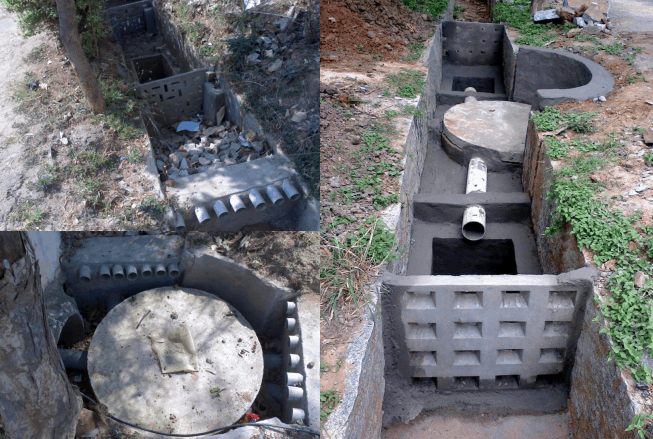
Examples of recharge well within a storm water drain. Pic: Biome
How much do they cost?
Recharge wells can cost anywhere between Rs 20,000 and Rs 1 lakh. As of early 2017, digging a recharge well of 3ft diameter and 20ft depth cost Rs 25,000 – Rs 35,000. Cost can vary based on size of the plot, depth of the well, design and quality of components. It takes only a couple of days to build a well.
Keep in mind
- Recharge well is easier to dig when the water table is low
- Dig the well as far away as possible from soak pits and toilets (at least 20 ft away). It should also be dug away from the building foundation and basement, as the well could lead to seepage. Consult an expert on preventing seepage into basement
- Dig the well as close as possible to existing borewells
- Avoid digging recharge wells in areas where hard rock is very close to the surface, since water recharge rates would be lower in these areas
- Ensure that no power cable or sewage pipe passes close to the recharge well
- Ensure that the catchment is clean and pollution-free, whether it is the rooftop, plot or storm water drain. Ensure that sewerage does not leak into the storm water drain
- De-silt the recharge well every five years
- When it seems plausible, do a pump test to see if your well has begun ‘yielding’. If yes, monitor at what times during the year your well yields, and you could begin using this water
For more details on specifications and cost of recharge wells, contacts of well-diggers etc., check these links:
[This guide is based on material originally published by Biome at the Urban Waters website]
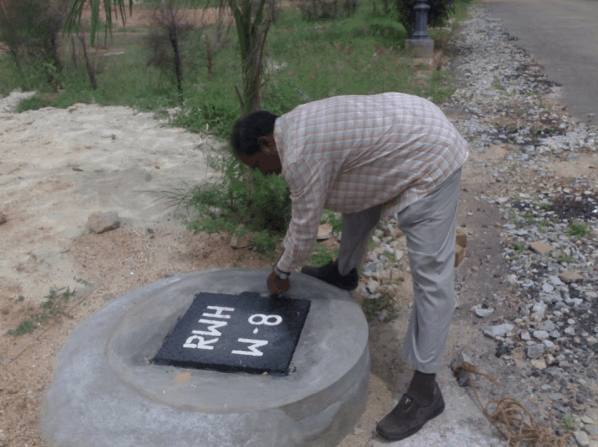
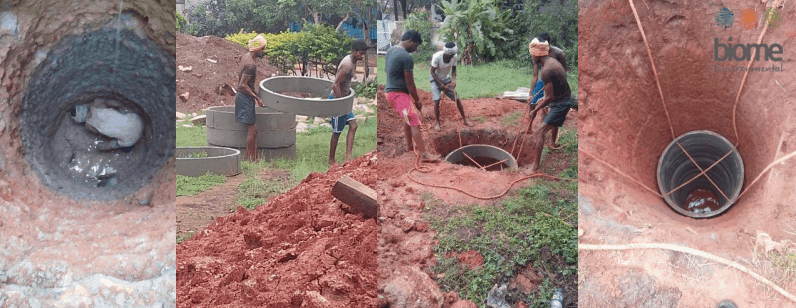
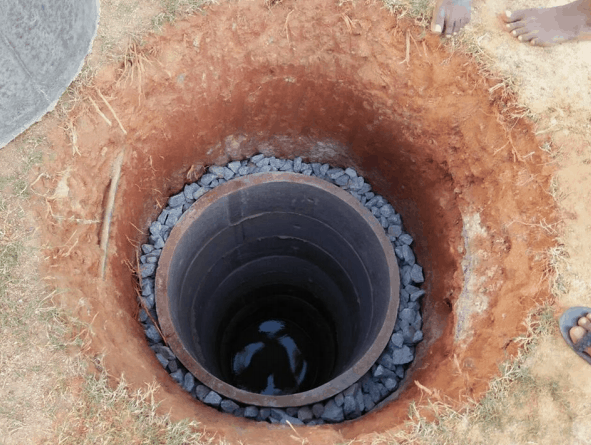
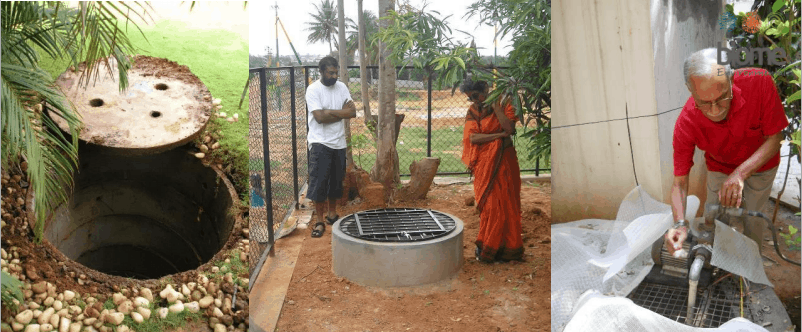
Excellent post. Please keep posting more of these.